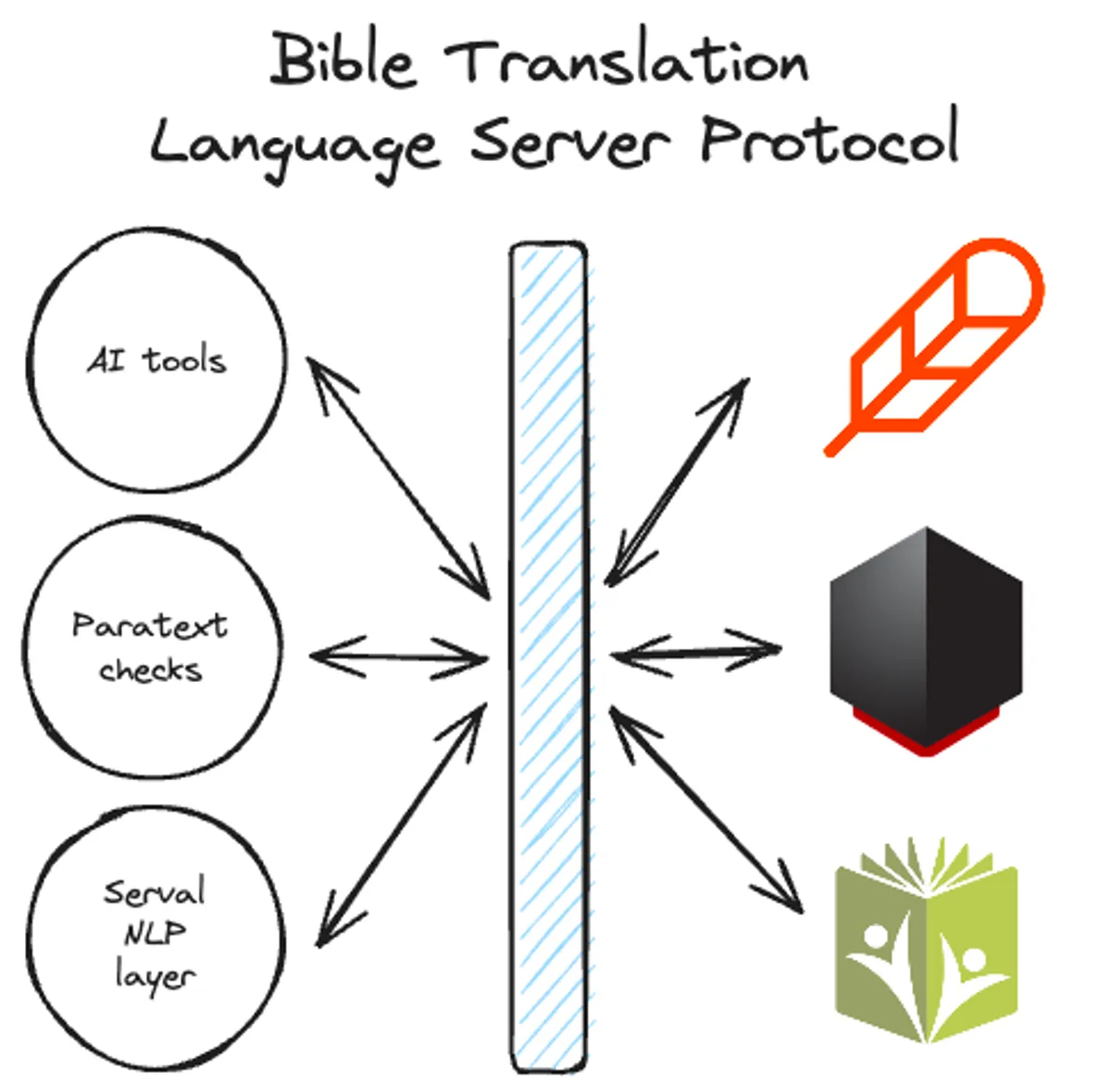Using the Language Server Protocol in Bible Translation
#translation
🔍 Context: The Bible-translation world has spawned a number of specialized editors, each catering to a unique set of users. This multiplicity ultimately serves the translators, ensuring that various needs are meticulously met.
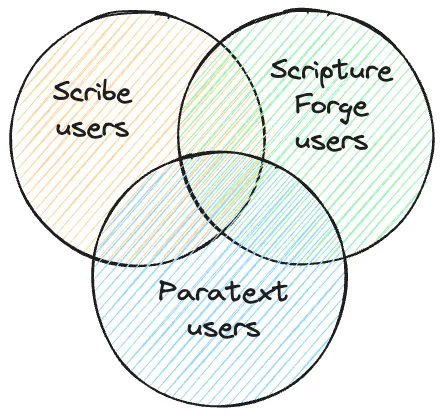
🔧 The Challenge: Each translation editor requires custom-built tools. While this tailoring offers specific solutions, it creates a siloed ecosystem.
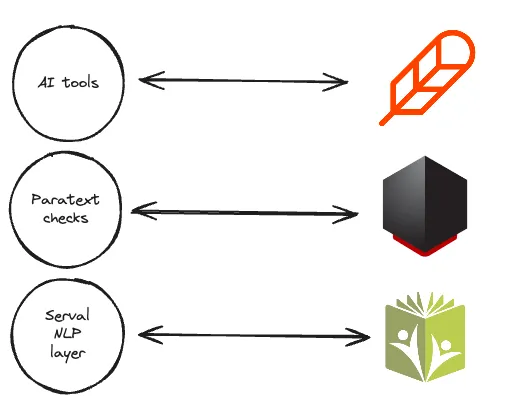
Integrating these tools across different editors can lead to a complex web of interfaces and contracts, muddying the waters of maintenance and ownership clarity.
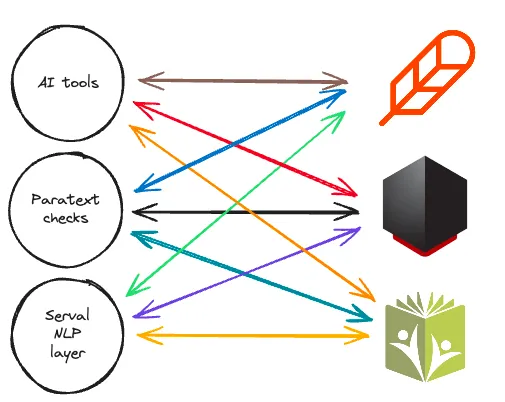
🤔 The Question: How do we combine our efforts while simultaneously maintaining a multiplicity of editors and avoiding the pitfalls of overcomplication and lack of clear ownership?
💡 The Insight: Imagine a world where every translation editor could use every new tool that was built right out of development. This could be possible if we all followed the same protocol.
🚀 The Solution: A Shared Protocol for Translation Tools
The world of programming has already found a solution to a similar problem: the Language Server Protocol (LSP). This protocol standardizes the communication between editors and tools, ensuring seamless interaction without the need for custom tooling for each editor.
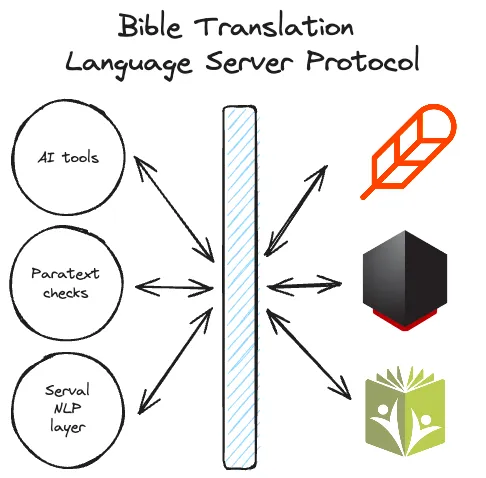
In short, the LSP allows tools to work across multiple editors, eliminating the need for custom development for each environment. This not only simplifies maintenance but also allows for more efficient use of resources and ensures scalability for future needs.
LSP provides a standardized way for tools to communicate with different editors, simplifying the integration process. To put it in the words of the LSP designers, “LSP is a win for both language providers and tooling vendors!”
💡 Benefits of LSP in Translation:
Just as in programming, where tools and editors align with the Language Server Protocol (LSP), translation tools too can benefit from this approach.
- Streamlined Communication: LSP ensures that all tools speak the same language, making it easier for them to work seamlessly with various editors.
- Reduced Complexity: By adopting a common protocol, the need for multiple, unique interfaces is eliminated, thereby reducing maintenance challenges.
- Clear Ownership: With LSP, boundaries between different pieces of software are well-defined, clarifying responsibility and ownership without sacrificing integration.
- Enhanced Collaboration: A unified approach fosters better collaboration and knowledge sharing among different tool developers.
- Future-Proofing: LSP is a forward-thinking solution, allowing for easier upgrades and integrations as new editors and tools emerge, since even when new editors or tools are introduced, they all follow the same protocol.
How does it work?
If you want to read more about the LSP in general, check out the official documentation. We’re implementing a language server that follows this protocol for Project Accelerate, and we would love to see the community adopt something like this protocol as well.
🎯 Conclusion
Incorporating the LSP into our translation tools aligns us with a proven method in the programming world. It offers a solution that respects the differences between editors, their teams, and their user bases, while greatly simplifying the tool-integration process. This not only enhances efficiency but also ensures a more manageable and scalable system for all involved.
📣 The Call to Action:
Let’s embrace the idea of a Language Server Protocol. By doing so, we uphold the unique value of each translation editor, while bringing clarity and ease to the tool integration process. This strategic move will keep us agile, focused, and ready to meet the evolving needs of the translation community with an ever-growing suite of tools.
Updated March 4, 2024: Clarified that we should simply aim to use the LSP, not create a new one.
